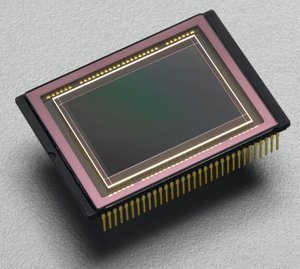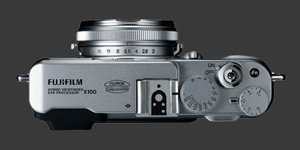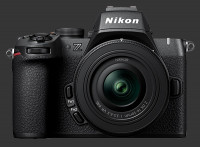The Future of Digital Cameras - Part 3
News
2010.10.21
Last time we looked at the direction of interchangeable lens cameras, which are evolving in multiple directions to obtain different compromises of image quality, speed and size. Today we look at the evolution of digital cameras and where we would like them do go. In 6 years of Digital Camera Evolution, Neocamera took a look at what has changed over the last 6 years of digital camera evolution among fixed-lens cameras, showing that progress has been tremendous in some areas while very little has changed in other. So the question is, what do we want to improve next?
 Image-quality and speed are certainly top priorities for digital cameras going forwards. It is interesting to see that while DSLRs have improved in both steadily, fixed-lens cameras which are split between CCD and CMOS implementations have been struggling to do both at once. We have very high quality images coming from CCD cameras and very fast CMOS-based fixed-lens cameras. BSI-CMOS sensors improve quality a bit but still lag being slower CCDs. Future cameras should keep these challenges as their primary targets. Namely, to improve image-quality and all aspects of camera-speed.
Image-quality and speed are certainly top priorities for digital cameras going forwards. It is interesting to see that while DSLRs have improved in both steadily, fixed-lens cameras which are split between CCD and CMOS implementations have been struggling to do both at once. We have very high quality images coming from CCD cameras and very fast CMOS-based fixed-lens cameras. BSI-CMOS sensors improve quality a bit but still lag being slower CCDs. Future cameras should keep these challenges as their primary targets. Namely, to improve image-quality and all aspects of camera-speed.
Image-quality improvements where mostly focused on image-noise but we would really like more advancements too in terms of dynamic-range, detail-retention and automatic white-balance. Focus-speeds, shutter-lag and shot-to-shot speeds - the most important measures of performance - have improved at a glacial pace. Even DSLRs which were fast already, have not been able to get much faster at this. Among fixed-lens cameras, focus-speed has been at a stand-still, at least until we see what the Phase-Detection-capable sensor from Fuji can do. One day, we hope that autofocus will be so fast that no one will notice it anymore.
Like any products being marketed, cameras need to have new features to warrant more purchases and upgrades. After a few years of simplifying compact and ultra-compact cameras, there has been a come-back among such cameras for getting back more advanced features such as manual-exposure, manual-focus and bracketing. This is certainly welcome by many, including advanced users who like to have a small second camera but cannot give up photographic controls. This is a trend that we would like to see continue.
 Also of great value is features which enable the camera to take photographs that would otherwise be tedious. In-camera panorama, now up to 360°, are a great example. One can do it later on a computer but without proper care it frequently results in a miss and returning for a reshoot is not always even an option. Doing it on-site, means you can try several times until it works. New sweeping-panoramas are a much faster to capture than individual frames. The present limitation is that the resulting image is of low-resolution, due to limited processing power in the camera. It would be awesome if that sweeping feature could capture full-resolution frames and the motion-path to let a computer do the stitching later, while also producing the low-res panorama to make sure that everything holds together.
Also of great value is features which enable the camera to take photographs that would otherwise be tedious. In-camera panorama, now up to 360°, are a great example. One can do it later on a computer but without proper care it frequently results in a miss and returning for a reshoot is not always even an option. Doing it on-site, means you can try several times until it works. New sweeping-panoramas are a much faster to capture than individual frames. The present limitation is that the resulting image is of low-resolution, due to limited processing power in the camera. It would be awesome if that sweeping feature could capture full-resolution frames and the motion-path to let a computer do the stitching later, while also producing the low-res panorama to make sure that everything holds together.
As much as we like the return of more controls among advanced compact cameras, the basic point-and-shoot models should really become simpler. For example, having removed things like exposure controls from their A-series Powershot, Canon has not really simplified their cameras. They still require too much interaction to be used by those who simply want to point, shoot and move-on. We now find many small cameras that have over 20 scene-modes, way too many to choose from. It is a legitimate use of a camera, now everyone whats to do photography, but most people want memories. Could we get away with a power-button, zoom-lever, shutter-release and flash-toggle button only? Maybe, it would make quite a simple camera. OK, maybe add a movie-mode button too.
So we have one line of cameras that should get more useful features and one that should get simpler. What is left is to start improving digital cameras beyond what they are. No, not adding a phone or built-in video games, it really has to be related to photography. Certain models already have built-in GPS units which geo-tag photos. Great option that saves the need for a separate GPS unit... unless you need one for navigation too.
Now consider the traveler, packing his camera bag fill of cameras, lenses, flashes and accessories. How much bulk could be save? Well, thanks to high-ISOs, now up to 102,400 less people feel the need for a tripod. Next, camera makers can look at filters, could we make cameras that have more than ND-filters in them? A polariser behind the lens - with some way of rotating it or maybe auto-rotating - could avoid needed multiple sizes of polarizers or step-up rings. Could the ND-filter be electronic instead, effectively creating ultra-low-ISO sensitivities? It would be much better because one would be able to see and frame with the ambient light-levels. The camera would also focus without the diminished light which a screw-on filter causes.
Flashes are bulky and have a lot of accessories with them. Some cameras can trigger them wirelessly via pulses of light. Surely someone can create a built-in remote trigger using radio-waves. How about built-in flashes with tilt-and-swivel capabilities? Or a pull-up diffuser? Our suggestion is to bring more capabilities into the camera. Digital-levels are a great examplee of this already. The need for a hot-shoe level is greatly reduced, plus being able to see the digital-level in viewfinder makes it vastly superior. A hot-shoe level really requires a tripod to be used. Some medium format cameras have a vertical-orientation tripod socket, saving the need for an L-bracket, this is probably not a hard thing to add on larger cameras.
Novelties are bound to always exist as each camera maker tries to find a break-out features. 3D is probably next. Face-Detection is now ubiquitous but it had to be attempted first. May we live in interesting times!
- Digital Camera
- Technology
Please Support Neocamera
All information on Neocamera is provided free of charge yet running this website is a huge endeavor. Purchases made via affiliate links found throughout the site help keep it running and up-to-date. There is no additional cost to you, so please consider buying via these links to our affilates:
If you found any information on this site valuable and did not purchase via our affiliate links, please considering donating via PayPal:
Any amount will be greatly appreaciated. Thank you for your support!
New Cameras & Lenses

Nikon Z5 II
24 Megapixels Mirrorless
Nikon Z Lens Mount
Built-in Stabilization
Weatherproof
2025-04-03
Canon RF-S 14-30mm F/4-6.3 IS STM PZ
Stabilization
Canon RF Mount Zoom
2025-03-26
Canon RF 20mm F/1.4L VCM
Weatherproof
Canon RF Mount Prime Lens
2025-03-26
Canon EOS R50 V
24 Megapixels Mirrorless
Canon RF Lens Mount
2025-03-26
Venus Optics Laowa 14mm T/2.6 Zero-D VV Cine
Sony E Mount Prime Lens
2025-03-25
Venus Optics Laowa 14mm T/2.6 Zero-D VV Cine
Nikon Z Mount Prime Lens
2025-03-25
Updates
2025.01.18

Fujifilm GFX 2025 Lens Roundup
Lens Review roundup of Fujifilm GFX Medium-Format lenses. Quality, performance and handling of the GF20-35mm F/4R WR, GF30mm F/3.5 Tilt-Shift and the GF55mm F/1.7.
2024.11.18

Best 2024 Photography Gifts for Every Budget
Great gifts for photographers and photo enthusiasts selected for every budget among the best products of 2024.
2024.08.07

Eye Protection Tips for Professional Photographers
The four main considerations for professional photographers regarding eyewear.
2024.07.14

Fujifilm X100VI Review
Flagship fixed-lens compact digital camera with a 40 MP sensor and Image-Stabilization, a first for the series. Retro design featuring dual control-dials, plus direct ISO, Shutter-Speed and EC dials. Its hybrid viewfinder can switch between EVF and OVF mode.
2024.05.09

Fujifilm GFX100 II Review
Flagship 102 Megapixels Medium-Format Mirrorless Digital Camera with 8-Stop 5-Axis IBIS, 8 FPS Drive, 8K Video and 400 MP Super-Resolution capture in a weatherproof and freezeproof body with dual control-dials and dual memory-card slots.
2024.04.03

Fujifilm X-T5 Review
Newest Fujifilm flagship boasting a 40 MP APS-C sensor, 5-axis IBIS with 7-stop efficiency, 15 FPS continuous drive, 6.2K Video capture, dual control-dials and dual SDXC UHS-II slots in a sturdy weatherproof and freezeproof body.
2023.11.20

Best Digital Cameras of 2023
Find out which are the Best Digital Cameras of 2023. All the new Mirrorless Digital Cameras from entry-level to high-end professional.
2023.07.10

Fujifilm X-H2 Review
40 Megapixels APS-C Hybrid Mirrorless Digital Camera with 7-stop IBIS. Fastest shutter ever and 8K video capture. Large builtin EVF with 0.8X magnification and 5.8 MP, plus an Eye-Start Sensor. Packed with features and large number of controls in a weatherproof and freezeproof body.
2023.05.07

Sony FE 20-70mm F/4G Review
Review of the unique Sony FE 20-70mm F/4G lens. The optical zoom of this lens spans ultra-wide-angle and medium focal-length coverage, making it one of the most versatile Full-Frame lenses on the market.
2023.01.15

Huion Inspiroy Dial 2 Review
Review of the Huion Inspiroy Dial 2 tablet, a medium sized drawing surface with dual dials and customizable buttons. Connects via USB-C or Bluetooth 5.0 with Windows, Linux and Android support.
2022.12.08

How to Pack for a Photo Trip
Find out how to pack for a travel photography trip, carry your gear safely while meeting airline regulations.
2022.11.13

Best Digital Cameras of 2022
The best digital cameras of 2022. A short list of the most outstanding models in their respective categories. Choose one for yourself or as a gift.







